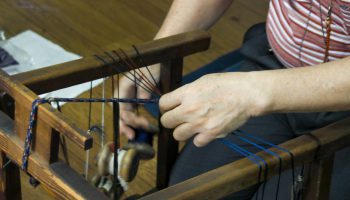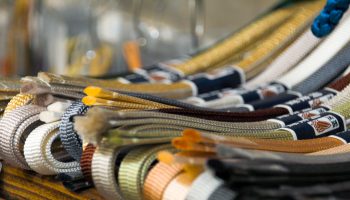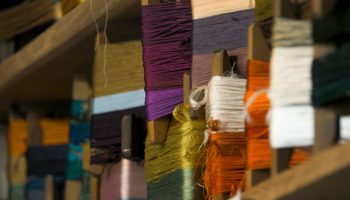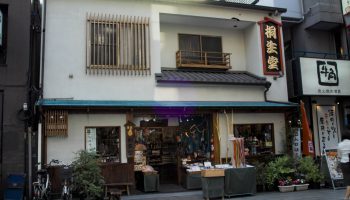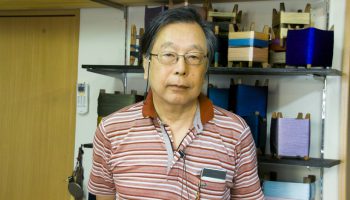Tokyo Kumihimo [ Braided Cords ]
Haneda Shinji
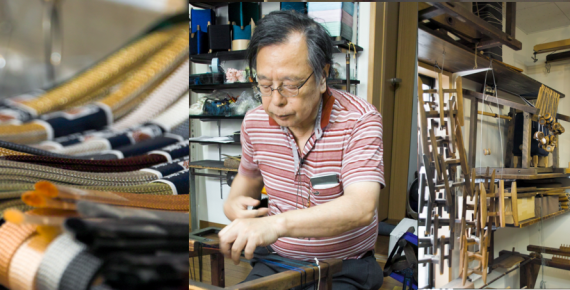
The fourth generation of “Kiryudo” Mr. Shinji Hata, is a craftsman that produces Tokyo Kumihimo for about half a century. He serves as a chairperson for the Haori Strap Fair Trade Association, the Tokyo Braid Thread Association, and the Edo Kumihimo Traditional Association.
Specializing among braids that are made by assembling silk threads dyed in many colors, the Tokyo Kimihito is particularly fond of Edo’s “Wabi-Sabi” contrasting with the gang of thread intersection and the glamor of the dynasty of Kyoto. It is characterized by it particular colors.
The braids were mainly used as a weapon and for the samurai’s kimono during the period when they existed. Edo period, the center of the samurai went to Edo (Ancient Tokyo) by the introduction of the Tokugawa shogunate, Edo became the best area for production, but as the Meiji era came, there were no samurai, demand had drastically decreased, and the survival of the braid industry was compromised. Because of that, geisha devised a way of tying a band using a braid called the “drum tie”, the demand for braids was revived and spread again, and has become a traditional craftwork that continues to be handed down now.
Today, the Braid industry is booming in the world, rather than just the drum tie used for kimono, there is now a lot of demand for swords using braids. Also, in unexpected applications, there are also suppliers who make sneaker strings and artificial satellite parachute strings. * Marker parts, now it is used not only for drum knot but also for all kimonos. Also, the sneaker strings and artificial satellites are examples of what other companies do.
Tokyo Kimihumo stains the silk thread first, and then it puts the thread up on a special table and it builds it together. Then applies stress to the tip, remove fuzz and finally stretch the stress with steam. “It’s possible in a couple of months if you just want to build the string, but it is difficult to make yarn, it takes about ten years until you could do a series of work from thread to assembly,” Haneda says.
Now, there’s machinery that can manufacture braids, craftsmen also beginning to decrease, it seems that it has become a scale sales of about one tenth of the peak hour. In Kiryudo it is possible to experience a workshop with a capacity of 5 to 6 people (Students only・Reservation required). You can assemble the prepared string with your own hands, and make it to a bracelet or strap. You may be able to feel the handmade excellence not a machine made production and develop true artisan’s skills.
